Australia So Much to See


Kakadu National Park - Ancient Aboriginal rock paintings and many large Crocodiles
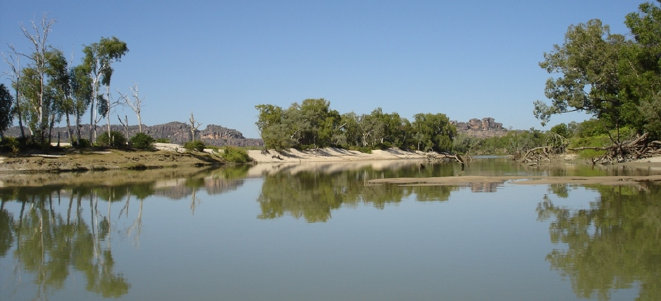
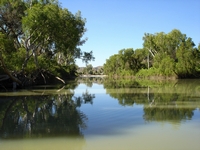
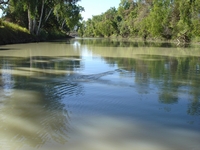
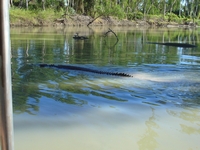
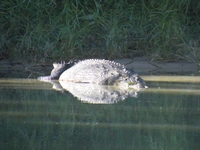
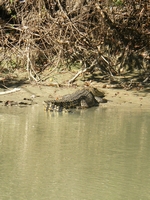
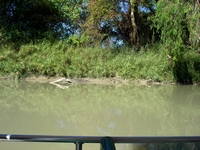
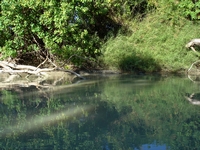
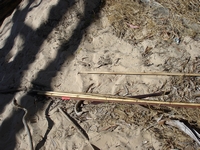
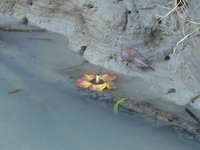
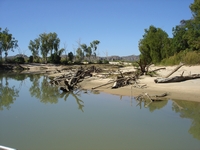
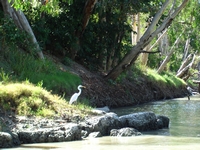
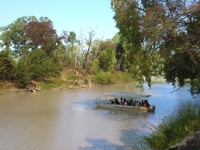
Our guide pointed out one crocodile to us, looking very bloated and listing to one side. Was it dead or wasn’t it? The
bloating and the angle indicated to me that it was dead, although the opinions of the other passengers were divided. Edging
the boat in a little closer than she should, we were within a distance that would normally alarm a crocodile into flight. This
one remained motionless as our guide debated that it may have eaten a wallaby and be sleeping the big meal off, or may have indeed
been dead. She was not permitted to bring the boat any closer. At close range, there was not a flicker of movement or
sign of life, so we stayed on watching, with more passengers agreeing with those of us who thought it dead. After quite some
minutes, this large crocodile suddenly woke up and rapidly swum into the murky depths of the river. It certainly had fooled
me.
The journey upstream along this 160 kilometre river was interrupted by a sand bank caused by cyclones in 2006. Previous to this,
boats could navigate the river all the way to the escarpment.
We stopped on the
The hibiscus tree drops its flowers into the river. The flowers are yellow in the morning, and to eat them will make you very
sick. In the afternoon they turn orange-red and drop off, and to eat them will make you better.
At Ubirr Rock there is a wealth of Aboriginal Rock paintings, with some of the painting being high on the rock faces, including the
Mimi style. These slender red figures are the oldest paintings here, and are so old that they are said to pre-date the Aborigines
and were painted by tiny Mimi spirits using blood. These aspects are similar to the Bradshaw paintings of the
Of zoological interest is a painting of a Thylacine which is high on the rock face. The Thylacine was once found on the mainland,
but has been extinct for somewhere between two and three thousand years.
In contrast to the hand stencils at Nanguluwur, this hand is filled with ochre, with white sprayed around it. This style can also be seen in the Kimberley.
Most of the paintings at Ubirr Rock are of the X-Ray style and usually of food such as fish and turtles. These are probably
from around 1,500 years old to more recent, and are lower down under the sandstone overhands, including on the ceilings. Another painting depicts a white man wearing boots, and is probably from the 1800s.

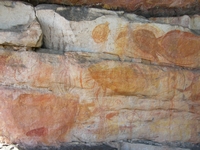
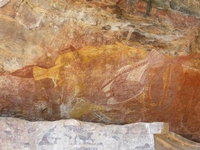
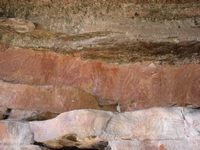
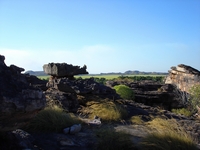
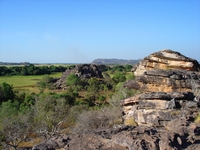
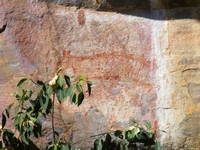
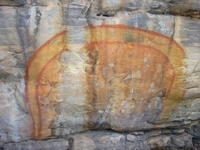
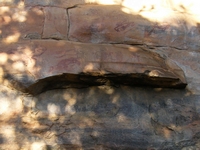
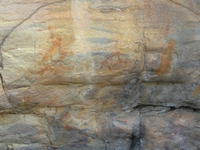
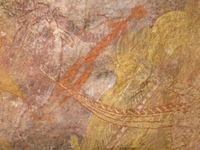
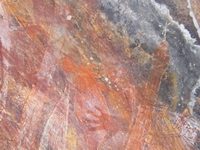
The Rainbow Serpent is one of the most powerful creation ancestors. There are many names and stories associated with the serpent across
After exploring the many galleries, it is time to move high onto the pinnacle Ubirr Rock, overlooking the verdant green Nadab floodplain
to the north. To watch the sunset from this pinnacle is a highlight for many visitors to Ubirr.